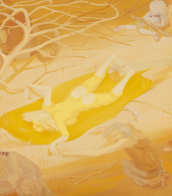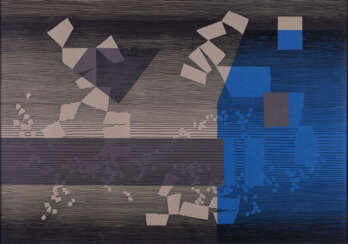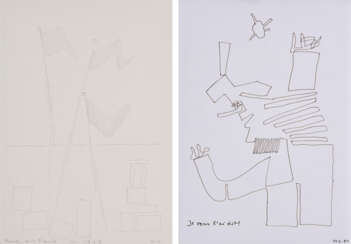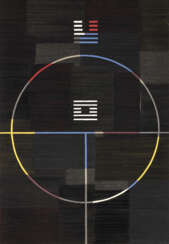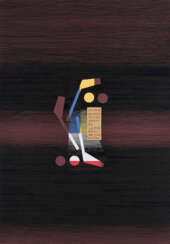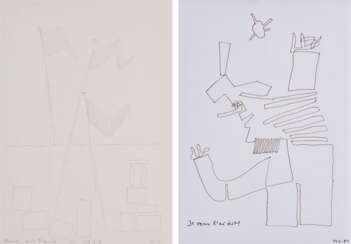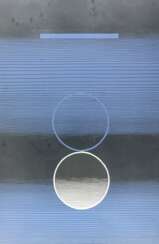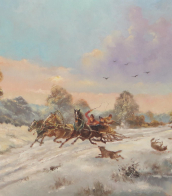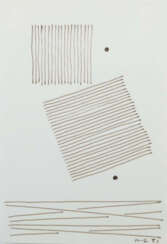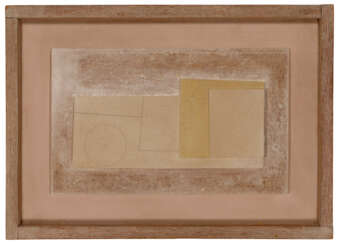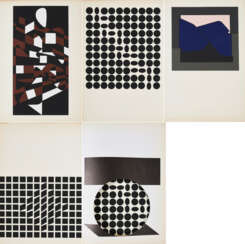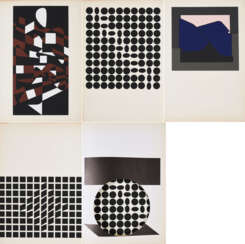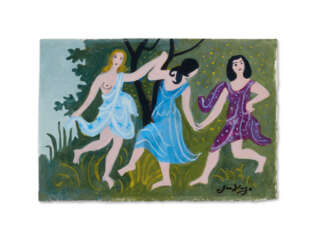michel seuphor
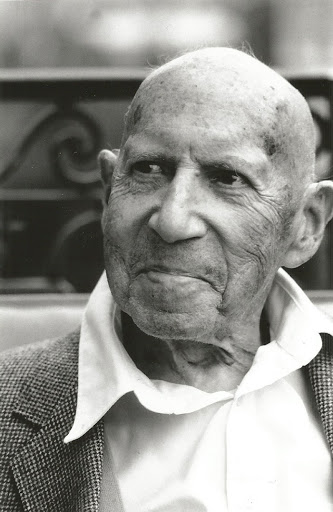
Michel Seuphor, born Fernand Berckelaers in Borgerhout, Belgium, on March 10, 1901, was a seminal figure in the avant-garde art movement, best recognized for his contributions as a Belgian painter, writer, and art critic. Seuphor's adoption of an anagram of Orpheus as his pseudonym underscores his deep connection to the arts, symbolizing a bridge between the world of the living and the artistic underworld. He was pivotal in establishing the literary magazine Het Overzicht in Antwerp in 1921, marking his initial foray into avant-garde circles and showcasing his commitment to fostering artistic innovation.
Seuphor's move to Paris in 1925 signified a major shift in his career, where he became deeply involved with the abstract art movement. His creation of the first abstract drawings between 1926 and 1928, and his collaboration with notable artists like Piet Mondrian, underscored his evolving artistic vision. Seuphor's founding of the Cercle et Carré (Circle and Square) group in 1930 with Joaquín Torres-García was a testament to his leadership and vision in promoting abstract art, drawing members such as Jean Arp and Le Corbusier.
Throughout his life, Seuphor authored pivotal works on abstract painting and sculpture, significantly influencing the documentation and understanding of 20th-century abstract art. His books, including "A Dictionary of Abstract Painting" and "The Sculpture of this Century," remain crucial texts for scholars and enthusiasts alike. Seuphor's legacy extends beyond his writings to include a significant collection of contemporary art, featuring works by artists such as Marcelle Cahn and Victor Vasarely, illustrating his role not just as a theorist and critic but also as a collector and patron of the arts.
For collectors and experts in art and antiques, Seuphor's life and work offer a fascinating glimpse into the development of abstract art in the 20th century. His contributions to the field through his artistic practice, critical writing, and patronage underscore the enduring impact of his vision.
To stay updated on auctions and sales featuring Michel Seuphor's works, sign up for updates. This subscription is your gateway to exploring the profound contributions of Michel Seuphor to the abstract art movement, ensuring you never miss an opportunity to engage with his legacy.
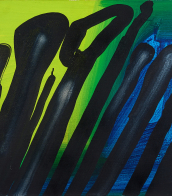

Michel Seuphor, born Fernand Berckelaers in Borgerhout, Belgium, on March 10, 1901, was a seminal figure in the avant-garde art movement, best recognized for his contributions as a Belgian painter, writer, and art critic. Seuphor's adoption of an anagram of Orpheus as his pseudonym underscores his deep connection to the arts, symbolizing a bridge between the world of the living and the artistic underworld. He was pivotal in establishing the literary magazine Het Overzicht in Antwerp in 1921, marking his initial foray into avant-garde circles and showcasing his commitment to fostering artistic innovation.
Seuphor's move to Paris in 1925 signified a major shift in his career, where he became deeply involved with the abstract art movement. His creation of the first abstract drawings between 1926 and 1928, and his collaboration with notable artists like Piet Mondrian, underscored his evolving artistic vision. Seuphor's founding of the Cercle et Carré (Circle and Square) group in 1930 with Joaquín Torres-García was a testament to his leadership and vision in promoting abstract art, drawing members such as Jean Arp and Le Corbusier.
Throughout his life, Seuphor authored pivotal works on abstract painting and sculpture, significantly influencing the documentation and understanding of 20th-century abstract art. His books, including "A Dictionary of Abstract Painting" and "The Sculpture of this Century," remain crucial texts for scholars and enthusiasts alike. Seuphor's legacy extends beyond his writings to include a significant collection of contemporary art, featuring works by artists such as Marcelle Cahn and Victor Vasarely, illustrating his role not just as a theorist and critic but also as a collector and patron of the arts.
For collectors and experts in art and antiques, Seuphor's life and work offer a fascinating glimpse into the development of abstract art in the 20th century. His contributions to the field through his artistic practice, critical writing, and patronage underscore the enduring impact of his vision.
To stay updated on auctions and sales featuring Michel Seuphor's works, sign up for updates. This subscription is your gateway to exploring the profound contributions of Michel Seuphor to the abstract art movement, ensuring you never miss an opportunity to engage with his legacy.
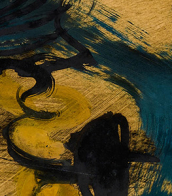

Michel Seuphor, born Fernand Berckelaers in Borgerhout, Belgium, on March 10, 1901, was a seminal figure in the avant-garde art movement, best recognized for his contributions as a Belgian painter, writer, and art critic. Seuphor's adoption of an anagram of Orpheus as his pseudonym underscores his deep connection to the arts, symbolizing a bridge between the world of the living and the artistic underworld. He was pivotal in establishing the literary magazine Het Overzicht in Antwerp in 1921, marking his initial foray into avant-garde circles and showcasing his commitment to fostering artistic innovation.
Seuphor's move to Paris in 1925 signified a major shift in his career, where he became deeply involved with the abstract art movement. His creation of the first abstract drawings between 1926 and 1928, and his collaboration with notable artists like Piet Mondrian, underscored his evolving artistic vision. Seuphor's founding of the Cercle et Carré (Circle and Square) group in 1930 with Joaquín Torres-García was a testament to his leadership and vision in promoting abstract art, drawing members such as Jean Arp and Le Corbusier.
Throughout his life, Seuphor authored pivotal works on abstract painting and sculpture, significantly influencing the documentation and understanding of 20th-century abstract art. His books, including "A Dictionary of Abstract Painting" and "The Sculpture of this Century," remain crucial texts for scholars and enthusiasts alike. Seuphor's legacy extends beyond his writings to include a significant collection of contemporary art, featuring works by artists such as Marcelle Cahn and Victor Vasarely, illustrating his role not just as a theorist and critic but also as a collector and patron of the arts.
For collectors and experts in art and antiques, Seuphor's life and work offer a fascinating glimpse into the development of abstract art in the 20th century. His contributions to the field through his artistic practice, critical writing, and patronage underscore the enduring impact of his vision.
To stay updated on auctions and sales featuring Michel Seuphor's works, sign up for updates. This subscription is your gateway to exploring the profound contributions of Michel Seuphor to the abstract art movement, ensuring you never miss an opportunity to engage with his legacy.
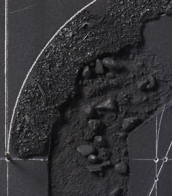

Michel Seuphor, born Fernand Berckelaers in Borgerhout, Belgium, on March 10, 1901, was a seminal figure in the avant-garde art movement, best recognized for his contributions as a Belgian painter, writer, and art critic. Seuphor's adoption of an anagram of Orpheus as his pseudonym underscores his deep connection to the arts, symbolizing a bridge between the world of the living and the artistic underworld. He was pivotal in establishing the literary magazine Het Overzicht in Antwerp in 1921, marking his initial foray into avant-garde circles and showcasing his commitment to fostering artistic innovation.
Seuphor's move to Paris in 1925 signified a major shift in his career, where he became deeply involved with the abstract art movement. His creation of the first abstract drawings between 1926 and 1928, and his collaboration with notable artists like Piet Mondrian, underscored his evolving artistic vision. Seuphor's founding of the Cercle et Carré (Circle and Square) group in 1930 with Joaquín Torres-García was a testament to his leadership and vision in promoting abstract art, drawing members such as Jean Arp and Le Corbusier.
Throughout his life, Seuphor authored pivotal works on abstract painting and sculpture, significantly influencing the documentation and understanding of 20th-century abstract art. His books, including "A Dictionary of Abstract Painting" and "The Sculpture of this Century," remain crucial texts for scholars and enthusiasts alike. Seuphor's legacy extends beyond his writings to include a significant collection of contemporary art, featuring works by artists such as Marcelle Cahn and Victor Vasarely, illustrating his role not just as a theorist and critic but also as a collector and patron of the arts.
For collectors and experts in art and antiques, Seuphor's life and work offer a fascinating glimpse into the development of abstract art in the 20th century. His contributions to the field through his artistic practice, critical writing, and patronage underscore the enduring impact of his vision.
To stay updated on auctions and sales featuring Michel Seuphor's works, sign up for updates. This subscription is your gateway to exploring the profound contributions of Michel Seuphor to the abstract art movement, ensuring you never miss an opportunity to engage with his legacy.
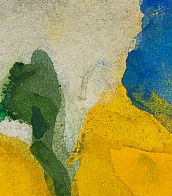

Michel Seuphor, born Fernand Berckelaers in Borgerhout, Belgium, on March 10, 1901, was a seminal figure in the avant-garde art movement, best recognized for his contributions as a Belgian painter, writer, and art critic. Seuphor's adoption of an anagram of Orpheus as his pseudonym underscores his deep connection to the arts, symbolizing a bridge between the world of the living and the artistic underworld. He was pivotal in establishing the literary magazine Het Overzicht in Antwerp in 1921, marking his initial foray into avant-garde circles and showcasing his commitment to fostering artistic innovation.
Seuphor's move to Paris in 1925 signified a major shift in his career, where he became deeply involved with the abstract art movement. His creation of the first abstract drawings between 1926 and 1928, and his collaboration with notable artists like Piet Mondrian, underscored his evolving artistic vision. Seuphor's founding of the Cercle et Carré (Circle and Square) group in 1930 with Joaquín Torres-García was a testament to his leadership and vision in promoting abstract art, drawing members such as Jean Arp and Le Corbusier.
Throughout his life, Seuphor authored pivotal works on abstract painting and sculpture, significantly influencing the documentation and understanding of 20th-century abstract art. His books, including "A Dictionary of Abstract Painting" and "The Sculpture of this Century," remain crucial texts for scholars and enthusiasts alike. Seuphor's legacy extends beyond his writings to include a significant collection of contemporary art, featuring works by artists such as Marcelle Cahn and Victor Vasarely, illustrating his role not just as a theorist and critic but also as a collector and patron of the arts.
For collectors and experts in art and antiques, Seuphor's life and work offer a fascinating glimpse into the development of abstract art in the 20th century. His contributions to the field through his artistic practice, critical writing, and patronage underscore the enduring impact of his vision.
To stay updated on auctions and sales featuring Michel Seuphor's works, sign up for updates. This subscription is your gateway to exploring the profound contributions of Michel Seuphor to the abstract art movement, ensuring you never miss an opportunity to engage with his legacy.

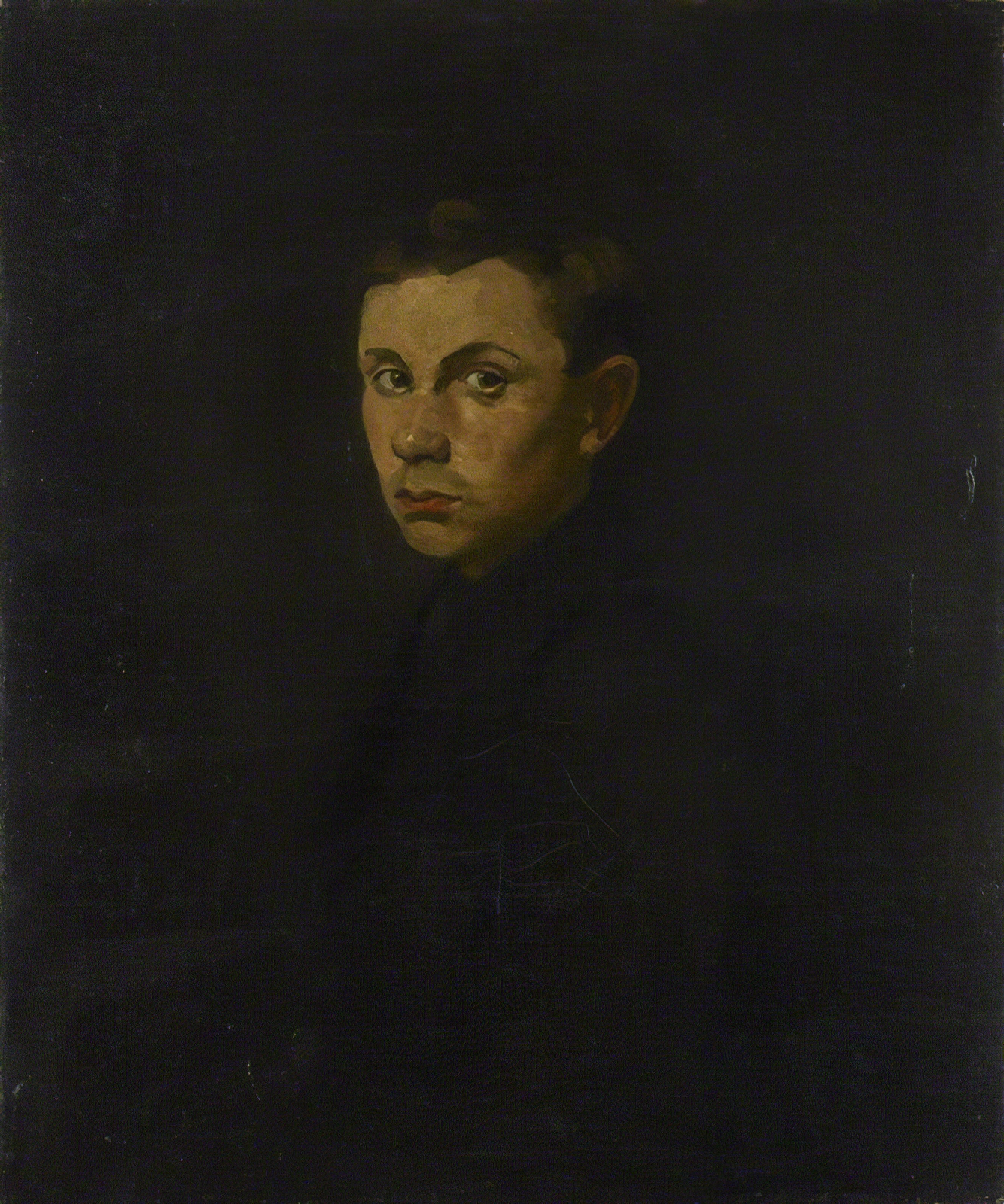
Ben Nicholson, an English artist, is celebrated for his significant contributions to abstract art. Born into an artistic family, Nicholson's work evolved from figurative art to embrace and lead in the development of abstract art in Britain. His early career was marked by experimentation with Cubism and interaction with influential artists like Barbara Hepworth, Henry Moore, Piet Mondrian, and Pablo Picasso, which profoundly shaped his artistic direction.
Nicholson's art is notable for its sensitive balance of tone and texture, employing dynamic and rhythmic lines that abstractly reference architectural forms and societal structures. His technique involved meticulous carving, painting, and the innovative use of color, especially in his later works where he explored the interplay of light and form to create poetic, abstract landscapes. His contributions were not just confined to his own practice; through collaborative projects and influential writings, he played a pivotal role in the discourse of modernist art, advocating for abstract art's broader appreciation.
Noteworthy pieces of Nicholson's work, including "March 1963 (Archimedes)" and "June 1961 (green goblet and blue square)," among others, are housed in prestigious collections like the Tate Gallery, Tate St Ives, Kettle's Yard Art Gallery in Cambridge, The Hepworth Wakefield, Pallant House Gallery in Chichester, and the Pier Arts Centre in Stromness, Orkney.
Nicholson's legacy as a pioneer of abstract art in the UK is secured through his innovative approaches and influential partnerships, which have left an indelible mark on the landscape of 20th-century art. His work continues to inspire and resonate, reflecting a deep understanding of the abstract's power to express the complexities of human experience and the natural world.
For collectors and experts in art and antiques interested in the pivotal movements of 20th-century art, Ben Nicholson's oeuvre offers a rich field of study and appreciation. To stay updated on new product sales and auction events related to Ben Nicholson's work, signing up for updates is a step towards deepening your understanding and appreciation of this key figure in modernist art.
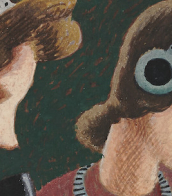
Jean Arp, born Hans Peter Wilhelm Arp, was a German and French poet, painter, graphic artist and sculptor. one of the founders of the Dada movement in Zurich.
Arp used abstract forms in his work and experimented with different materials such as wood, metal and stone. He was also known for his poetic works, in which he applied a method of randomly selecting words, called the "clutter method". Arp believed that this method helped him express his thoughts more precisely and originally. Arp's influence on the arts is still significant today.
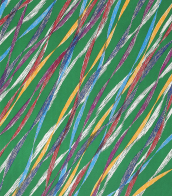

Victor Vasarely, a seminal figure in the Op art movement, was a Hungarian-French artist celebrated for his pioneering contributions to geometric abstract art. Born Győző Vásárhelyi in Pécs, Hungary, in 1906, Vasarely's artistic journey led him to Paris, where he honed a distinctive style marked by optical illusions and kinetic art. By the late 1940s, he had developed his iconic approach, utilizing geometric shapes and a limited color palette to create artworks that seemed to move and vibrate. His work "Zebra," created in 1937, is often cited as one of the earliest examples of Op art, showcasing his fascination with creating the illusion of depth and movement on a flat surface.
Throughout the 1950s and 1960s, Vasarely's exploration into optical effects deepened, leading to significant series like his "Vega" works. These pieces are characterized by their illusionary three-dimensional space, seemingly pushing and pulling the viewer into the canvas. His dedication to optical and geometric abstraction was not just a pursuit of aesthetic innovation but also an exploration of the viewer's perception, making the observer an integral part of the artwork.
Vasarely's influence extended beyond the canvas, impacting architecture, sculpture, and even space exploration. In 1970, he founded the first museum dedicated to his works in Gordes, followed by the establishment of the Fondation Vasarely in Aix-en-Provence in 1976, showcasing his vision of integrating art with the environment. His artworks have found homes in prestigious institutions like the Museum of Modern Art and have been celebrated in exhibitions worldwide.
For collectors and experts in art and antiques, Vasarely's works offer a mesmerizing blend of scientific precision and artistic expression, encapsulating a moment in art history where the boundaries between viewer and artwork blurred. His legacy is a testament to the power of visual perception and the endless possibilities of abstract art.
For those interested in delving deeper into Victor Vasarely's visionary world and perhaps acquiring a piece of this history, signing up for updates on new product sales and auction events related to Vasarely's works is highly recommended. Stay informed and embrace the opportunity to own a part of the optical and geometric abstraction movement that Vasarely so brilliantly pioneered.
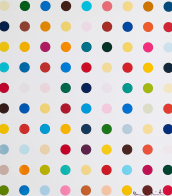

Victor Vasarely, a seminal figure in the Op art movement, was a Hungarian-French artist celebrated for his pioneering contributions to geometric abstract art. Born Győző Vásárhelyi in Pécs, Hungary, in 1906, Vasarely's artistic journey led him to Paris, where he honed a distinctive style marked by optical illusions and kinetic art. By the late 1940s, he had developed his iconic approach, utilizing geometric shapes and a limited color palette to create artworks that seemed to move and vibrate. His work "Zebra," created in 1937, is often cited as one of the earliest examples of Op art, showcasing his fascination with creating the illusion of depth and movement on a flat surface.
Throughout the 1950s and 1960s, Vasarely's exploration into optical effects deepened, leading to significant series like his "Vega" works. These pieces are characterized by their illusionary three-dimensional space, seemingly pushing and pulling the viewer into the canvas. His dedication to optical and geometric abstraction was not just a pursuit of aesthetic innovation but also an exploration of the viewer's perception, making the observer an integral part of the artwork.
Vasarely's influence extended beyond the canvas, impacting architecture, sculpture, and even space exploration. In 1970, he founded the first museum dedicated to his works in Gordes, followed by the establishment of the Fondation Vasarely in Aix-en-Provence in 1976, showcasing his vision of integrating art with the environment. His artworks have found homes in prestigious institutions like the Museum of Modern Art and have been celebrated in exhibitions worldwide.
For collectors and experts in art and antiques, Vasarely's works offer a mesmerizing blend of scientific precision and artistic expression, encapsulating a moment in art history where the boundaries between viewer and artwork blurred. His legacy is a testament to the power of visual perception and the endless possibilities of abstract art.
For those interested in delving deeper into Victor Vasarely's visionary world and perhaps acquiring a piece of this history, signing up for updates on new product sales and auction events related to Vasarely's works is highly recommended. Stay informed and embrace the opportunity to own a part of the optical and geometric abstraction movement that Vasarely so brilliantly pioneered.
